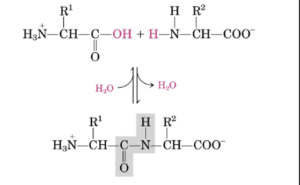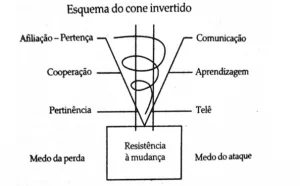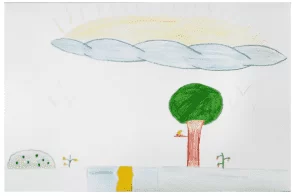ORIGINAL ARTICLE
MOTA, Cláudia Nogueira da [1]
MOTA, Cláudia Nogueira da. The use of drugs in a case of melancholy and the rapid therapeutic effects in psychoanalysis. Revista Científica Multidisciplinar Núcleo do Conhecimento. Year 06, Ed. 05, Vol. 06, pp. 40-50. May 2021. ISSN: 2448-0959, Access link: https://www.nucleodoconhecimento.com.br/psychology/case-of-melancholy
ABSTRACT
We start from a clinical case in which, lost her son, a woman begins to use cocaine, identifying herself to the dead son and evidencing the impossibility of performing the work of mourning. From this clinical case, several questions were raised, including differential diagnosis. After carefully examining the theory of mourning in Freud and some comments of Lacan, we conclude by melancholy, whose clinical theory we go through with classical psychiatry and psychoanalysis, inquiring about therapy: what modality of care, with Lacanian orientation, for brief care that takes place under the aegis of psychiatric reform. We verified that in these institutions the theory of rapid therapeutic effects provides the introduction of listening to the subject’s singular. With the notion of cycle, in the theory of rapid therapeutic effects, the psychoanalyst J. A. Miller signals that an analysis can start, finish, and restart, rettaking the route again.
Keywords: Psychoanalysis, Clinical case, Symptom, Treatment, Psychiatric reform.
1. INTRODUCTION
This article is derived from the Master’s Thesis “O recurso às drogas em um caso de melancolia e os efeitos terapêuticos rápidos em psicanálise”, under the guidance of Professor. Dr. Márcia Rosa Vieira Luchina[2] , and discusses the challenges of clinical practice, lacanian psychoanalytic orientation in the face of the transformations of demand and the emergence of new symptoms. Drug addiction presents itself as one of the privileged ways of contemporary malaise. The drug experience reveals an excess enjoyment, which goes beyond the limits of the principle of pleasure, providing a enjoyment that rejects the subject’s relations with language.
The beginning of the experience of clinical care, guided by Lacanian psychoanalysis, occurred to patients in the female ward in a public institution of psychiatric hospitalization in Belo Horizonte.
We consider with Amarante (1995) that the psychiatric reform is
a process of critical and practical formulation, which has as objectives and strategies the questioning and elaboration of proposals for transformation of the classical model and the paradigm of psychiatry. In Brazil, psychiatric reform is a process that arises more concretely and, mainly, from the conjuncture of redemocratization, at the end of the 1970s. Its foundations are not only a conjunctural criticism of the national mental health subsystem, but also – and mainly – a structural criticism of knowledge and classical psychiatric institutions, within all the political and social movement that characterizes the conjuncture of redemocratization. (AMARANTE, 1995, p. 87).
Resuming a little the history of public policy on alcohol and drugs in Brazil, we can not fail to emphasize that this history goes along with mental health policy. Before the psychiatric reform, users of alcohol and other drugs had as their sole destiny to be admitted to psychiatric hospitals. It was from the reform movement that specific public policies were established for these users, such as ordinance 2,197 of 10/14/2002, which advocates actions of an educator and rehabilitation character.
The work in an institution puts for the psychoanalyst to articulate the ethics of psychoanalysis with the field of mental health, since it is referred to the institutional. In a very enlightening text on this issue, Psicanálise e Instituição: a segunda clínica de Lacan, thepsychoanalyst Zenoni (2000) considers it more important than seeking to know the type of psychoanalysis practiced in the institution, to know if there is clinical motivation in the existence of an institution. Extracting the consequences of this formulation, there is no disjunction between clinic and institution, if to intervene in a given case, the institutional response was found as possible.
It will be the clinical motivation that, in our view, will allow us to follow the response that the subject presents as singular and unforeseen, in the face of the malaise that affects him, that invades him.
In view of these considerations between the Lacanian psychoanalytic clinic and the institution, many questions have arisen related to the specificity of care in a case of drug addiction that, unlike long-term hospitalizations, should be carried out quickly. For methodological reasons, two issues will be highlighted as the guiding thread of this work: the first on the triggering of drug addiction and the second on the rapid therapeutic effects in psychoanalysis in treatments under the aegis of the psychiatric reform.
We will then leave for a more detailed analysis of the two methodological reasons mentioned above.
2. TRIGGERING DRUG ADDICTION: IMPLICATIONS IN A CLINICAL CASE
If the French psychoanalyst Èric Laurent (2014) warns us in his text Três observações sobre a toxicomania that we find ourselves in an entirely new context, compared to the time of Freud, another Argentine psychoanalyst, Fabián Naparstek (2008), continuing on this new context, will differentiate the type of response given to the malaise in culture, according to the historical moment. Thus, at The Time of Freud, drugs occupied the place of one of the possible exits for the subject in the face of his suffering. In the contemporary situation, due to the implications of the incidence of the discourse of science and capitalism in the consumer society, we have the laws of the market brokering theoffers of objects (gadgets) that provoke a corrosive action on values and ideals, but provide the subjects with a surplus of enjoyment. In O Seminário, livro 17:o avesso da psicanálise(1969-1970/1992), Lacan already anticipated the effects of these discourses:
Indeed, we should not forget, in any case, that the characteristic of our science is not to have introduced a better and broader knowledge of the world, but to have made appear in the world things that in no way existed in the plane of our perception. (LACAN, 1969-1970/1992, p. 150)
Among the things that have come to emerge in the world, drugs occupy a place among the goods of capitalism and the most-of-enjoy[3]. The capitalist discourse, version of the master’s discourse, structure the relations of the contemporary world.
The fault does not refer to the lack-to-be, but to the lack to be filled by the objects produced. The subjects are offered a single way out, the same one indicated for all: everyone enjoys the same way. This new world order establishes consumption as a universal response. This universal response through consumption produces localized effects, such as segregation phenomena.
Starting from the question of how the patient of our investigation makes her entrance into drug addiction, we will refer to the psychoanalysts of today, such as Jacques Alain Miller and Fabián Naparstek, to focus on this issue.
Although the theme of drug addiction is currently recurrent in many psychoanalyst studies, we can still consider little investigated the modality of care in hospitalization institutions that are guided by the principles of psychiatric reform. These institutions are characterized by assisting patients in crisis, and hospitalization is briefly hospitalized. This institutional characteristic gave rise to the specificity of this type of care, which advocates the brevity of hospitalization. We raise the following questions:(1) what can an analyst, guided by Lacanian psychoanalysis, in the conductof treatment? (2) What can an analyst in a short-stay institution, in the care of a melancholic psychosis that uses the drug to anesthetize its pain of existing?
Faced with the limitations arising from time, we found another occurrence: the use of illicit drugs regularly used by psychotics can operate masking the diagnosis, because according to psychoanalytic studies, the drug can act preventing the triggering of psychosis.
Thus, we start from a clinical case, Léia (fictitious name), a 45-year-old patient. Prior to her first psychiatric hospitalization, Léia a claims to have been using cocaine for four years. In his terms, he justifies his hospitalization: “I drank too much, I was angry, I fought with my boyfriend.” When reporting on cocaine abuse he says: “It was after I lost my son, he drowned. I started drinking, spending all my pay in the bar, gathered the people I knew and took to the bar, it was like a celebration. The cocaine was when, in his death, it was me and my other daughter with the fire department to the place where he was. The fireman asked me, ‘Did your son use drugs?’ I said no. My daughter called me and said he was using cocaine. I felt betrayed. I started using cocaine. I wanted to feel what he felt.”
This clinical fragment tells us how patient Léia made her entrance into drug addiction. With the contribution of argentine psychoanalyst Fabián Naparstek (2008), we delimit the punctual moment in the psychic economy that leads to a choice of the drug object as a trigger of drug addiction. Still on this topic, Naparstek states: “In the clinic it is necessary that we arrive at a diagnosis that locates the function that fulfills this drug for this subject.” (NAPARSTEK, 2008, p. 61).
Returning to the clinical case, we see that the triggering of drug addiction in Léia refers to the death of the son. This finding introduces us to the problem of grief linked to drug addiction, and specifically to melancholic psychosis.
Due to the brevity of the care, performed in four sessions, it was not possible to delimit the structural diagnosis. Only after research in the archives and medical records, we verified that the patient returned to the psychiatric hospital other times, after her first hospitalization, being attended in the emergency department and in another female ward of the hospital.
We believe that these new data, together with the period of care performed, allow to trace the structural diagnosis, as well as the function that the drug performs there.
It is important to clarify that while Léia remained in care in the female infirmary where her follow-up was performed, this moment corresponded to her first hospitalization. However, after his discharge, there were new hospitalizations in another ward.
Contacts were also made with professionals from other mental health institutions where the patient was referred after her hospital discharge.
The clinical case is part of a situation of mourning that occurred with this subject, that is, from a loss.
In this context, the introduction of cocaine is based on a real loss, the death of the child. At the time of recognition of the body, Léia comes to know that her son was using cocaine. Knowing this one that produced a profound impact: shortly after, Léia starts to abuse cocaine, resulting in her first hospitalization.
Seeking to have as reference the classical psychiatry to approach melancholy, Freud uses grief as a model and dedicates himself to constructing a causal hypothesis for the psychic effects of melancholy. Unlike grief, melancholy produces a psychic inhibition, a drive impoverishment, due to which pain is produced. In his pre-psychoanalytic writings, Freud notices the eruption of a hole, a hole in the psyche, which presents the impossible to be represented, that is, the real.
According to the Freudian conception, melancholy would represent a work of mourning that does not conclude. And the reason for not being concluded, according to Freud’s thesis in Luto e melancolia (1917[1915]/2010), is due to the identification with the lost object.
With Lacan, we know that not being able to lose what was lost is the effect of forclusion, causing the subject to come across the hole of phallic meaning, pointing to what is of the order of psychosis.
Because she did not have the symbolic resources that would allow her to do the mourning work, Léia sticks with the object, making it impossible to complete it.
Faced with the loss of the real hole, we see the introduction of the drug, obturing the empty place of the lost object.
In this sense, and the case demonstrates it exemplarily, the drug object eternalizes the presence of the object and, moreover, functions as an anesthetic for the pain of existing, a solution that holds in itself a perdition.
3. RAPID THERAPEUTIC EFFECTS IN PSYCHOANALYSIS
We verified that the rapid therapeutic effects, situated in the field of applied psychoanalysis, enable the psychoanalyst’s praxis in other places besides conventional setting, making it instigating the clinical practice that interrogates the theory, which, as a consequence, requires, in the case of psychoanalysis, to enrich and preserve the discourse invented by Freud.
Thus, the psychoanalyst’s work in a mental health institution, which is also intended for users of alcohol and other drugs, is to bring out the subject who is supplanted by ideals that are part of the institution, defining what the subject should want, alienating him to institutional rules.
Not giving in to these ideals is the psychoanalyst’s function, since the ethics of psychoanalysis will be reposed the subject’s question.
In 1918, in the text Linhas de progresso na terapia analítica, Freud shows an interest in the extension of psychoanalysis to other domains. (FREUD, 1919-1918/1976)
In 1967, in the Proposition of October 9, 1967 on the psychoanalyst of the School, Lacan draws attention to the psychoanalyst’s responsibility for psychoanalysis in extension. (LACAN, 2003).
Jacques Alan Miller (2001), returns the discussion about the difference between pure psychoanalysis and psychoanalysis applied to therapy, clarifies that the latter would have as purpose to deal with the suffering of the symptom, without the requirement that the procedure be taken to the end, at which point the psychoanalyst is produced.
The rapid therapeutic effects relate to applied psychoanalysis. Miller opens the discussion about the demands of rapid therapeutic effect addressed to today’s analysts. Defined as a reduction analysis, in this space the subject is called to speak in such a way to produce a subjectivation of his complaint.
We believe that the rapid therapeutic effects in psychoanalysis provide, in mental health institutions, the introduction of listening to the subject’s singular.
By being all treated as “drug addicts” or “junkies”, it becomes impossible to follow the singular trajectory of the encounter of each of these subjects with the drug.
We could see that there is no record in the patient’s medical records Léia regarding the “election” of cocaine, and there is no place in the medical discourse for the subject.
In our opinion, it became central in the direction of The treatment of Léia a the fact that the encounter with cocaine occurred after the death of the son, concomitant with the discovery that he used this drug.
Jacques Alain Miller (2008) defines the rapid therapeutic effects in psychoanalysis as a reduction analysis, with the notion of “Cycle”: an analysis can start, finish and restart, thus redoing the path at a new moment.
It is expected that the subject can make a subjective remanagement, relaunching from there a new Cycle in the direction of treatment. When completing a Cycle, it should be considered a work of subjectivation in the face of its symptom and the loss of jouissance, which translates into a subjective change.
In the clinical case in question, it seemed essential to us to locate the function of the drug, for a short-term psychoanalytic treatment, which made Léia able to try to approach with words her loss, a situation previously impossible by the act of drugging. In addition to her problem with alcohol and cocaine, something new might emerge, something that may never have been said before, different from what Léia had been saying. Thus, it was possible for her to say that cocaine was her way of seeking to feel what her son felt when using it. We emphasize that this new something brings important effects on the treatment, such as clarifying the diagnosis, it becomes possible to delimit the subjective position and perceive possible arrangements that enable forms of stabilization.
Therefore, unlike other therapeutic approaches, according to Lacanian teaching, the rapid therapeutic effects in psychoanalysis seek to be guided in the clinic by the impossible, by the real, which always refers to new treatment possibilities.
4. FINAL CONSIDERATIONS
The interest in the theme of this research, as mentioned, started from the practice of a care in a female ward for patients hospitalized in a psychiatric hospital of the public network of Belo Horizonte. This hospital, guided by the principles of the Psychiatric Reform, maintains as one of these principles, the brevity of the hospitalization period.
In the practice of care, there was a significant number of patients who were hospitalized for alcohol and drug abuse. Among these patients, we found Léia, the guiding thread of our investigation, who abused alcohol and drugs. It was his first hospitalization in a psychiatric hospital, although he had been using these substances for four years before.
In view of this fact, some questions arose regarding the modality of care for patients who abuse alcohol and drugs, in an institution that recommends the brevity of hospitalization. What would be possible to do, in a care guided by Lacanian psychoanalysis? How to get out of the analytical setting, from conventional care, without compromising the ethics of psychoanalysis?
From what was discussed throughout this work, drug addiction, unlike the context at the time of Freud, constitutes a response given to the malaise in culture.
However, in the contemporary context, by the discourse of science and capitalism, the consumer society is formed, which, in turn, provides the subjects with a surplus of jouissance, that is, it produces subjects that are not marked by desire, lack, but by a lack to be filled by objects produced by science.
Consequently, a universal response is offered to all, which is the answer through consumption. Drugs, in this context, become a privileged object of enjoyment. However, the singularity (what is the drug for this subject?) suggests differences in relation to its use.
Locating the function of the drug for the subject was essential for us in a short-term psychoanalytic treatment, such as those performed in mental health institutions, where the research was carried out.
Together with the medical records, clinical discussions of the case in the team meetings and the four sessions of patient care, in addition to the contact with other health services, such data, collected and analyzed, were of paramount importance to guide the treatment of Léia, especially to arrive at the diagnosis of a melancholic psychosis.
By favoring the subjectivity of the patient, we were able to know that the moment of triggering drug addiction occurred with the death of the child and the concomitant discovery that she was using cocaine. This discovery, by effect of structure, returns to him in a devastating way, through his drug-addicted enjoyment.
We seek, with Lacanian guidance, to extract the subject from drug abuse, that is, it will be the subject himself who will tell us how his singular course was in the encounter with drugs. The use of cocaine is demarcated by Léia, at this point moment of the loss of her son.
As a rapid therapeutic effect, we can situate the moment when Léia tries to locate, symbolically its loss.
Unlike other therapeutic approaches, according to Lacanian teaching, rapid therapeutic effects are not reduced by the imperatives of short-term results. In the context of evaluating the therapeutic by statistical means or by determinations imposed by the social Other, the rapid therapeutic effects seek to operate with the clinic, with the knowledge that the subject produces.
In the course of this work, questions remained about the relationship between drug use and grief, and beyond, with the melancholic process.
If during her account, Léia at no time says she wants to stop using the drug, can we think of the drug as a sinthoma? How to perform a treatment from the perspective of rapid therapeutic effects, in a case that has an interface between psychosis and drug addiction, with the crossing of the institutional Other that determines medical discharge?
These are issues to be taken up in further research.
The analyst is responsible for operating from the ethics of psychoanalysis, not responding with standardization, but providing the acceptance of the singular and enabling each one to be responsible for his/her way of enjoying.
REFERENCES
AMARANTE, Paulo. Loucos pela vida: a trajetória da Reforma Psiquiátrica no Brasil. Rio de Janeiro: Editora Fiocruz, 1995.
FREUD, Sigmund. Linhas de progresso na terapia psicanalítica. In: Edição standard das obras completas de Sigmund Freud (Vol. 17). Rio de Janeiro: Imago, 1976. (Trabalho original publicado em 1919/1918).
FREUD, Sigmund. Luto e melancolia. In: Obras Completas (Vol. 12, pp. 170-194). São Paulo: Companhia das Letras, 2010. (Trabalho original publicado em 1917[1915]).
LACAN, Jacques. O seminário, livro 16: de um Outro ao outro. Rio de Janeiro: Jorge Zahar, 2008. (Trabalho original publicado em 1968-1969).
LACAN, Jacques. O seminário, livro 17: o avesso da psicanálise. Rio de Janeiro: Jorge Zahar, 1992. (Trabalho original publicado em 1969-1970).
LACAN, Jacques. Proposição de 9 de outubro de 1967 sobre o psicanalista da Escola. In: LACAN, Jacques. Outros escritos. Rio de Janeiro: Jorge Zahar Ed., 2003.
LAURENT, Èric. Três observações sobre a toxicomania. In: MEZÊNCIO, M., ROSA, M., FARIA, W. (Orgs,). Tratamento possível das toxicomanias com Lacan. Belo Horizonte: Scriptum, 2014.
MILLER, Jacques-Alain. Efeitos terapêuticos rápidos em psicanálise: conversação clínica com Jacques-Alain Miller em Barcelona. Belo Horizonte: Escola Brasileira de Psicanálise, Scriptum, 2008.
MILLER, Jacques-Alain. Psicanálise pura, psicanálise aplicada & psicoterapia. Revista Phoenix, Curitiba, n. 3, 2001.
NAPARSTEK, Fabián y colaboradores. Introducción a la clínica com toxicomanias y alcoholismo. Buenos Aires: Editora grama, 2008.
ZENONI, Alfredo. Psicanálise e instituição: a segunda clínica de Lacan. Belo Horizonte: Abrecampos, 2000, p. 12-93.
APPENDIX – FOOTNOTE REFERENCE
2. Federal University of Minas Gerais, Faculty of Philosophy and Human Sciences, Department of Psychology.
3. More-to-enjoy: Lacanian term, formalized in the Seminário, livro 16: de outro a outro (1968-1969/2008). The concept of “more-of-the-enjoyment” is described as homologous to Karl Marx’s added value, reveals “one more”, or an “surplus” enjoyment, which presents itself as not recoverable by the subject, to the extent that it is lost.
[1] PhD student in Education Psychology – UNINI (Mexico), Master in Psychoanalytic Studies – FAFICH/UFMG.
Submitted: March, 2021.
Approved: May, 2021.




